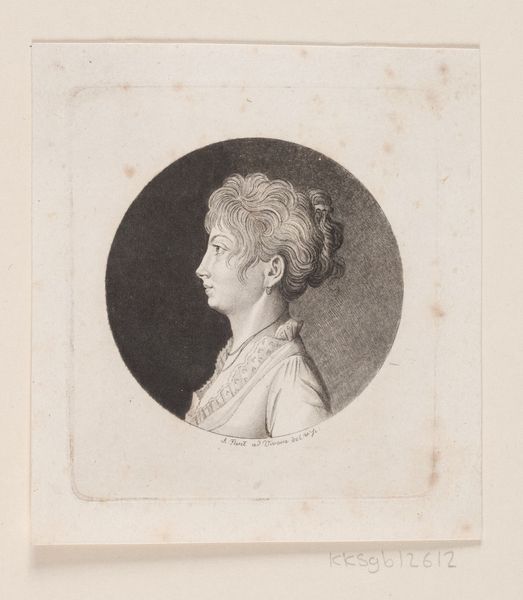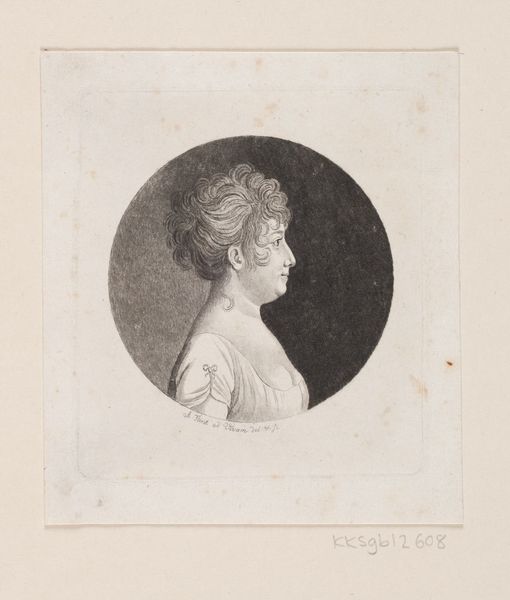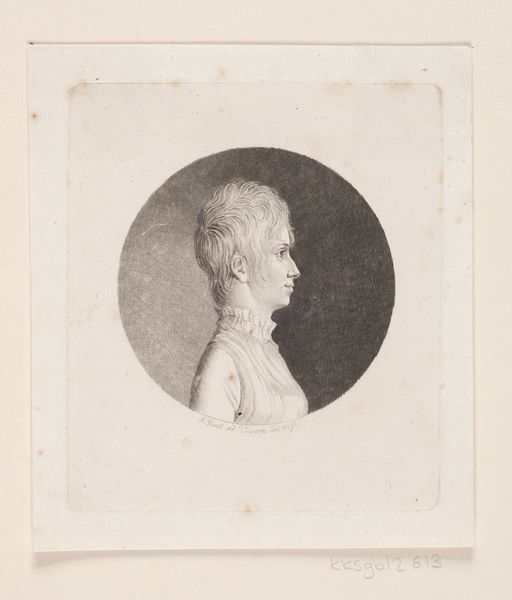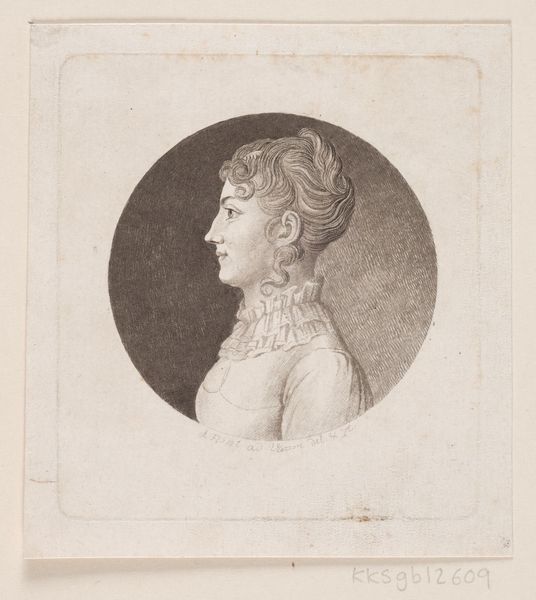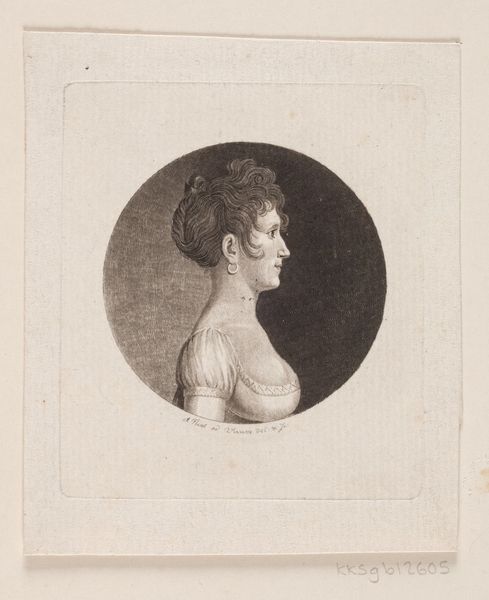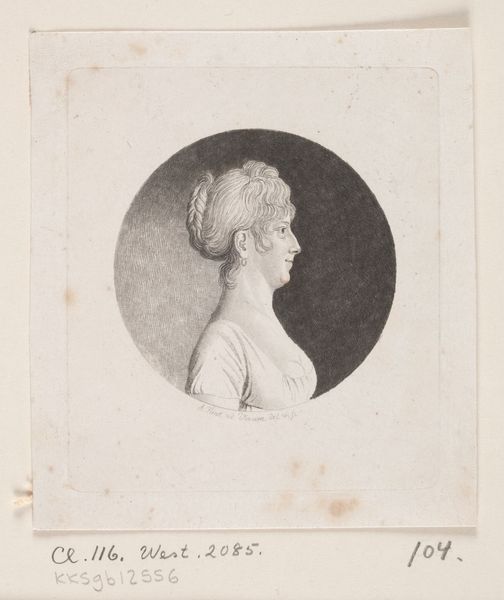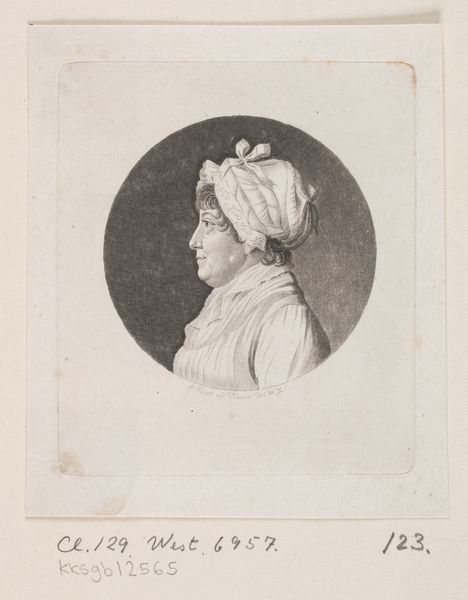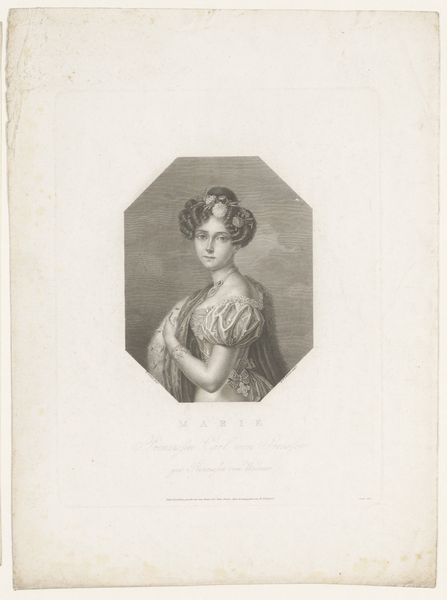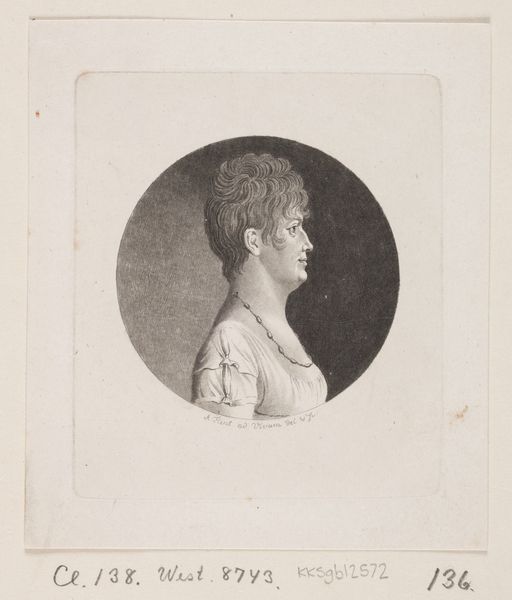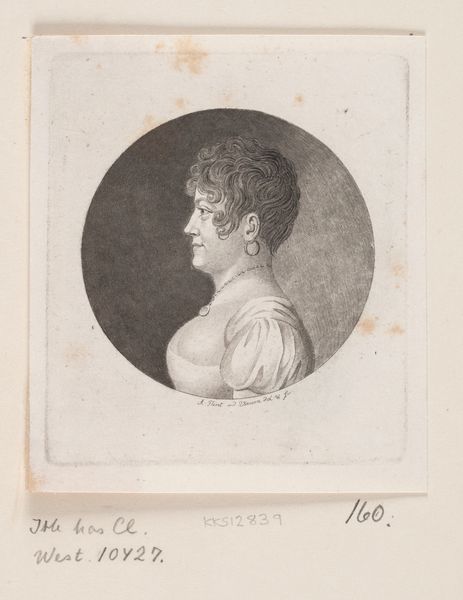
print, paper, engraving
#
portrait
#
neoclacissism
# print
#
paper
#
portrait reference
#
romanticism
#
engraving
Dimensions: 60 mm (None) (billedmaal), 94 mm (height) x 77 mm (width) (plademaal)
Curator: Here we have a print entitled "Frederikke C. Mourier." This engraving on paper, dating back to somewhere between 1767 and 1824, is currently housed here at the SMK, Statens Museum for Kunst. Editor: My first impression? There’s a sense of quiet confidence emanating from her profile, wouldn't you say? The simple composition, just her head and shoulders in that oval frame, it really centers the gaze on her features. Curator: Indeed. The stark contrast between the figure and the background is a characteristic technique from the era when the politics of representation were very rigid. Think about who had the means and the social capital to be rendered in such a fashion. Editor: Precisely. Considering the historical context is vital. Who was Frederikke C. Mourier, and how did societal structures influence the way she's portrayed? There’s a romantic undertone here too—the delicate lines, her soft hairstyle – it suggests more than just a formal portrait. I am very much concerned with power and representation: whose story is not being told? Curator: A vital question to pose, as it prompts discussions surrounding power dynamics within portraiture and highlights that portraiture as a genre primarily served as a tool of social affirmation and status projection for a specific social class. This particular artwork does fit in nicely within the Neoclassical portraiture conventions while signaling a shift towards the aesthetics of Romanticism. It embodies both order and the stirring of deeper sentiments, creating tension between outward display and the emergence of self. Editor: That tension is palpable. Her reserved expression hints at an inner world, and while the portrait does indeed conform to expectations, it makes one wonder what the process of creating an acceptable image of femininity really involved. What self-censorship was Frederikke employing, and why? What parts of her own self had to be repressed? Curator: It certainly presents us with much to consider regarding the expectations and constraints placed upon women during that period. Editor: Absolutely, making her gaze, in this print, all the more engaging, don’t you think? Curator: I wholeheartedly agree. These nuanced perspectives invite a re-evaluation of historical depictions and encourage vital dialogue concerning gender, representation, and identity. Editor: It shows us art’s continuing power to speak to the complexities of history—and to invite fresh, sometimes uncomfortable questions—for today.
Comments
No comments
Be the first to comment and join the conversation on the ultimate creative platform.

